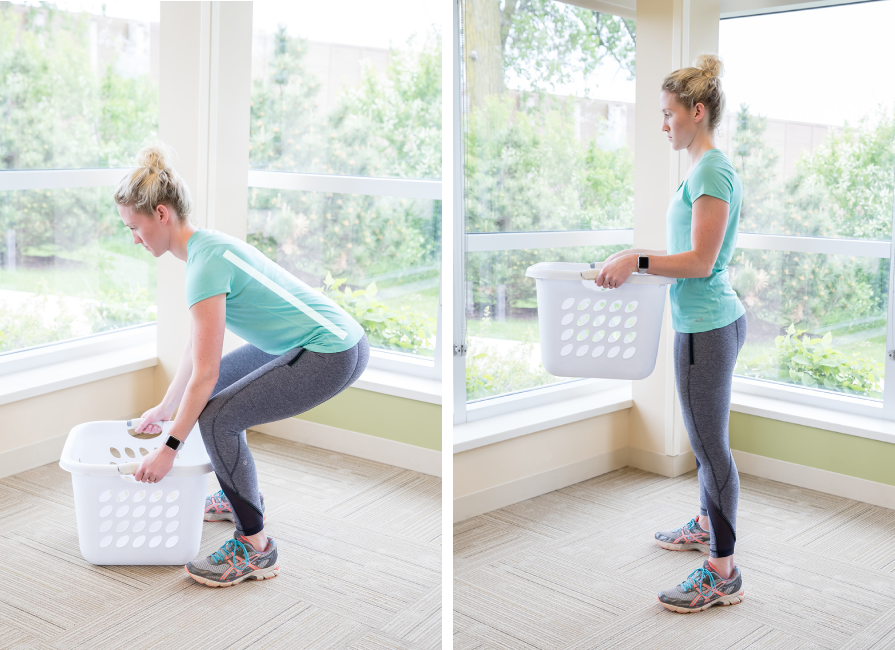Lifting at home and work
Know the risk points and your limits. Awkward shapes and sizes, lifting overhead, and heavy weights all come with higher incidence of injury. Not sure on the weight? Try pushing it on the ground first to gauge its weight. It’s better to ask for help, or use a dolly, when it’s beyond something you can safely lift.
Helpful Tips
- Is it packed right? A balanced load makes for safer lifting. When things shift, it’s easier to lose your grip and the box fall.
- Take your time. Rushing doesn’t allow enough time to evaluate the lift and use good form. Slow, smooth lifting protects muscles from strain.
- Get close. Reaching and lifting are not a good combination. Keep your center of gravity close to the object you are lifting. As you carry the object, keep it as close to the center of your body as possible.
- Posture is everything. Feet shoulder width apart, bend at the knees to straddle the load, flex your midsection, and lift with your legs.
- Where to cheat with posture. If you are lifting a light object, you don’t need the same lifting technique as with mid-weight and heavy objects. Hold on to something sturdy for support, slightly bend one knee, lean over and allow your other leg to rise slightly.
- Save the twist for the dance floor. Lifting and twisting often result in injury and increased strain on the back. Your solution: point your toes and pivot your body as a unit, rather than turning at the waist.
- A back belt won’t save you. It hasn’t been proven that back belts can protect you from injury.
How to Lift Safely
Waist/Knee Height Lifting

Overhead Lifting

Click here to view our Spine Care guide for even more helpful tips >>
